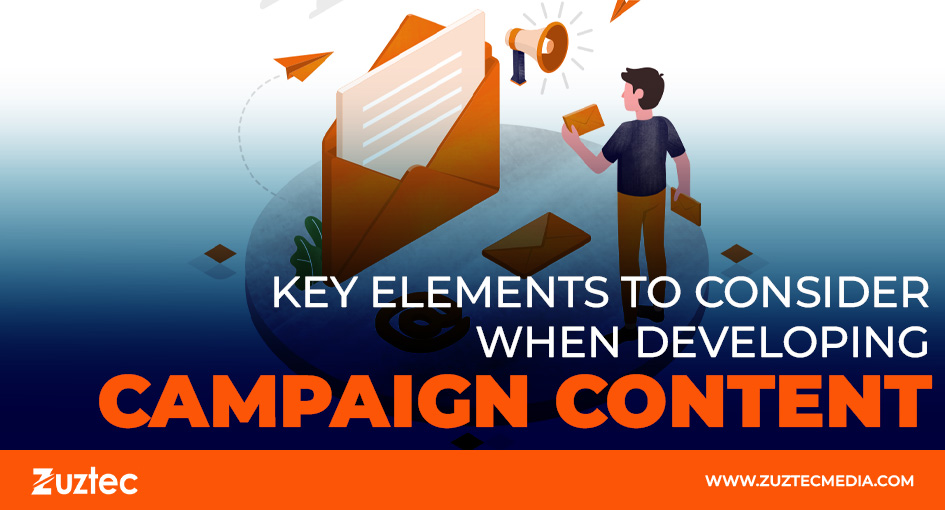
Key Elements to Consider When Developing Campaign Content
Campaign content plays a pivotal role in the success of any marketing effort, whether it’s for a product launch, a seasonal promotion, or an ongoing brand-building initiative. In the highly competitive digital landscape, creating the right content campaign can make all the difference in how well your brand connects with your target audience. It’s about more than just putting words and images together, it’s about crafting content that resonates with your audience, clearly communicates your brand’s message, and drives action. Effective content campaigns are designed to capture attention, evoke interest, and guide potential customers toward conversion. Whether your goal is to increase sales, enhance brand awareness, or foster customer loyalty, the content you create will play a crucial role in achieving those objectives.
However, developing content that truly drives results requires a strategic approach. There are multiple factors to consider audience insights, content formats, messaging, visual design, and more. A deep understanding of your audience’s preferences and pain points is essential to creating content that engages and motivates them to take action. Additionally, ensuring that your content is optimized for various platforms and channels, as well as aligning it with your overall marketing goals, is key to maximizing its impact. In this article, we will explore the key elements that make campaign content successful, helping you develop impactful content that delivers meaningful results.
1. Campaign Content: Clear Campaign Objectives
Before you even start thinking about the content itself, you need to define the purpose of your campaign. What are you hoping to achieve? Whether it’s increasing brand awareness, generating leads, driving sales, or promoting a specific product, having clear objectives will provide direction for your content creation process. By aligning your content with your campaign goals, you ensure that every piece of content created serves a strategic purpose and works towards achieving measurable results.
For example, if your goal is to increase sales, your content should focus on highlighting the benefits and features of your product in a compelling way. If you’re aiming to raise awareness, your content should focus on educating your audience about your brand and building trust. Defining your objectives early on will guide every step of the content development process.
2. Understanding Your Target Audience
One of the most important aspects of a content campaign is ensuring it resonates with your target audience. Knowing your audience’s needs, preferences, pain points, and buying behavior is critical to crafting content that speaks directly to them. It’s not just about creating content that looks good; it’s about creating content that answers your audience’s questions and provides value.
To achieve this, segment your audience based on demographics such as age, gender, location, interests, and behaviors. Once you understand who you’re targeting, you can tailor your content campaign to address their specific needs. For example, a campaign aimed at millennials might focus on social media-friendly visuals and messaging, while a campaign targeting senior professionals might use more formal language and case studies to build credibility.
3. Compelling and Consistent Messaging
Once you’ve defined your campaign objectives and identified your target audience, the next step is to develop a compelling message. Your messaging should be clear, concise, and aligned with your brand’s voice. Consistency is key, as your audience should easily recognize your brand and message across various content types and platforms.
A campaign content must effectively communicate what you’re offering, why it matters, and what action you want the audience to take. It’s essential that your message is consistent throughout all channels, whether you’re using social media posts, email campaigns, landing pages, or video ads. Consistency in tone, style, and value proposition ensures your audience remains engaged and understands what to expect from your campaign.
4. Visual Appeal and Design
Humans are highly visual creatures, so the design and aesthetics of your campaign content can significantly influence its effectiveness. From images and graphics to colors and fonts, every visual element needs to support your campaign’s messaging and objectives. High-quality visuals can make your campaign more memorable, engaging, and shareable.
The design should align with your brand’s identity while also appealing to the emotions of your target audience. Whether you’re running a paid social media ad or an email newsletter, ensure that the visuals grab attention and complement the content. For example, bright, bold colors might work for a product launch targeting younger audiences, while elegant, minimalistic design might be more suitable for a luxury brand.
In addition to visual appeal, the layout and usability of the content are important. Whether it’s a mobile-optimized landing page or an easy-to-read email, ensuring that your content is accessible and easy to navigate will help improve user experience and engagement.
5. Strong Call-to-Action (CTA)
A campaign content’s ultimate goal is to drive specific actions like purchases or sign-ups. A strong call-to-action (CTA) is crucial, ensuring a simple, direct, and aligned message. The CTA should be contrasting, bold, and strategically placed, evoke urgency, exclusivity, or value, motivating the audience to take immediate action.
In conclusion, when developing campaign content, every element plays a vital role in ensuring your marketing efforts succeed. From setting clear objectives and understanding your audience to creating compelling visuals and engaging CTAs, each piece of the puzzle must work together harmoniously. By considering these key elements, you can create effective, high-performing content that resonates with your audience and drives the results you want. Whether you’re aiming for higher conversions, increased engagement, or brand awareness, a well-executed content strategy will help you achieve your goals and set your campaign up for success.

